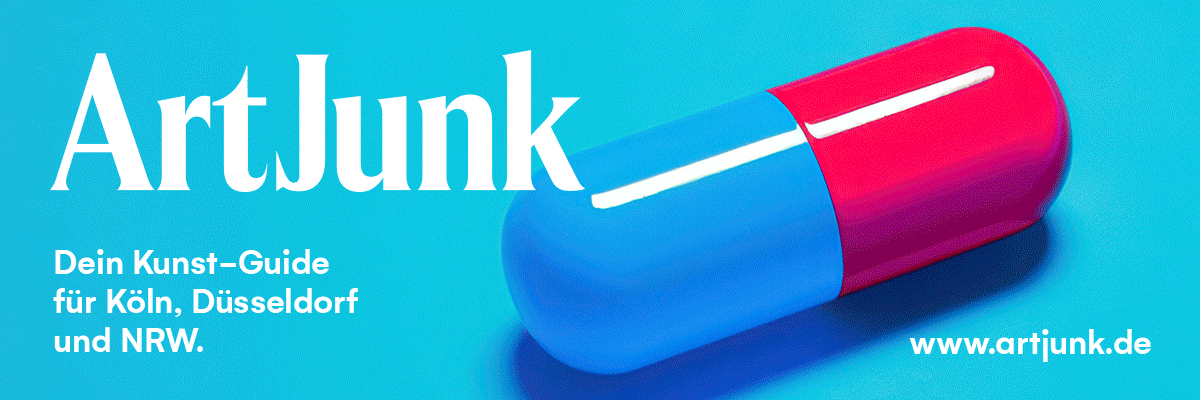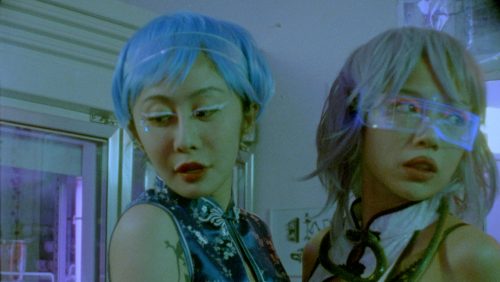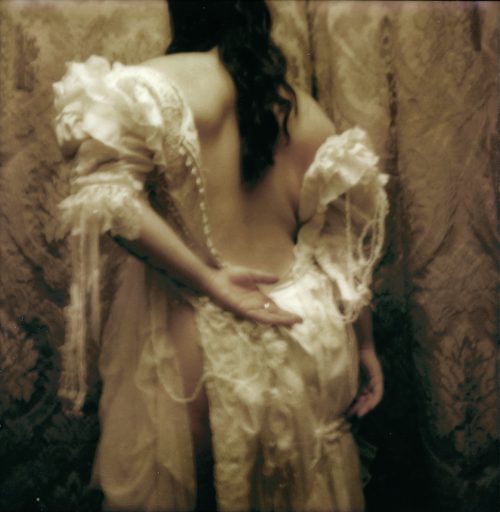
Oskar Pollack, Manuel Rugo
3 + 3 = 5
Project Info
- 💙 Aula, Academy of Fine Arts Vienna
- 🖤 Oskar Pollack, Manuel Rugo
- 💛 Vivienne Aubin, Manuel Rugo
Share on
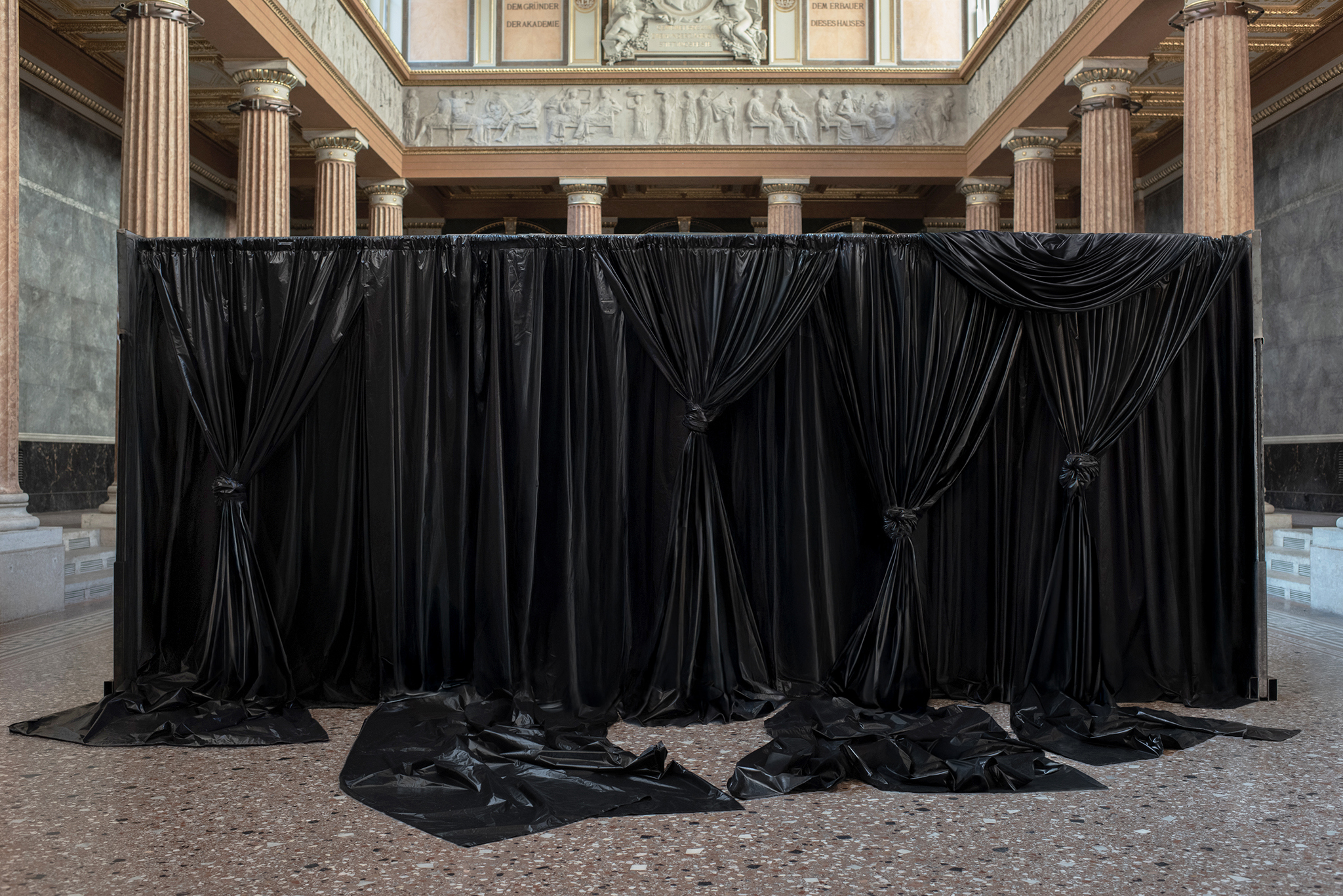
Advertisement
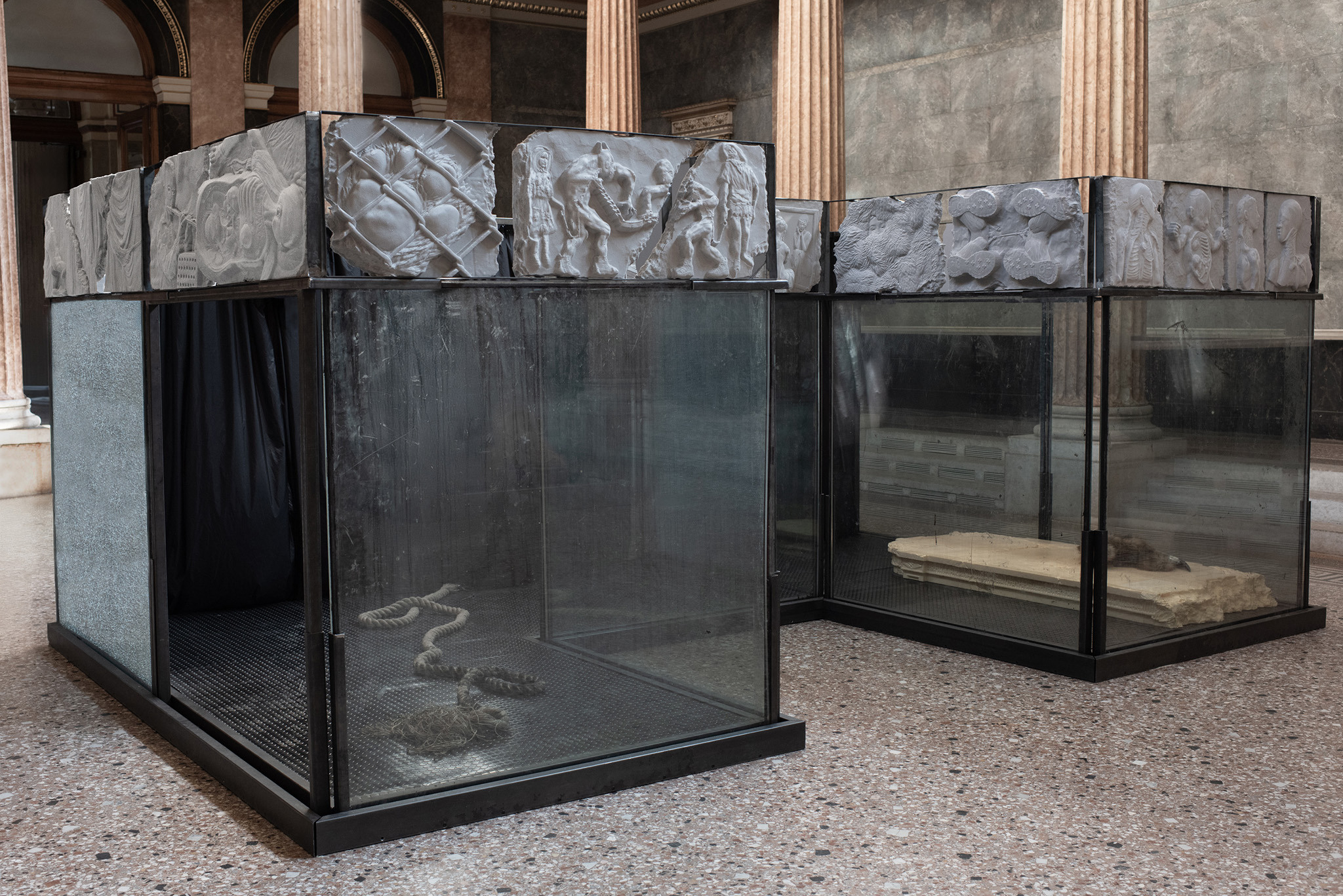
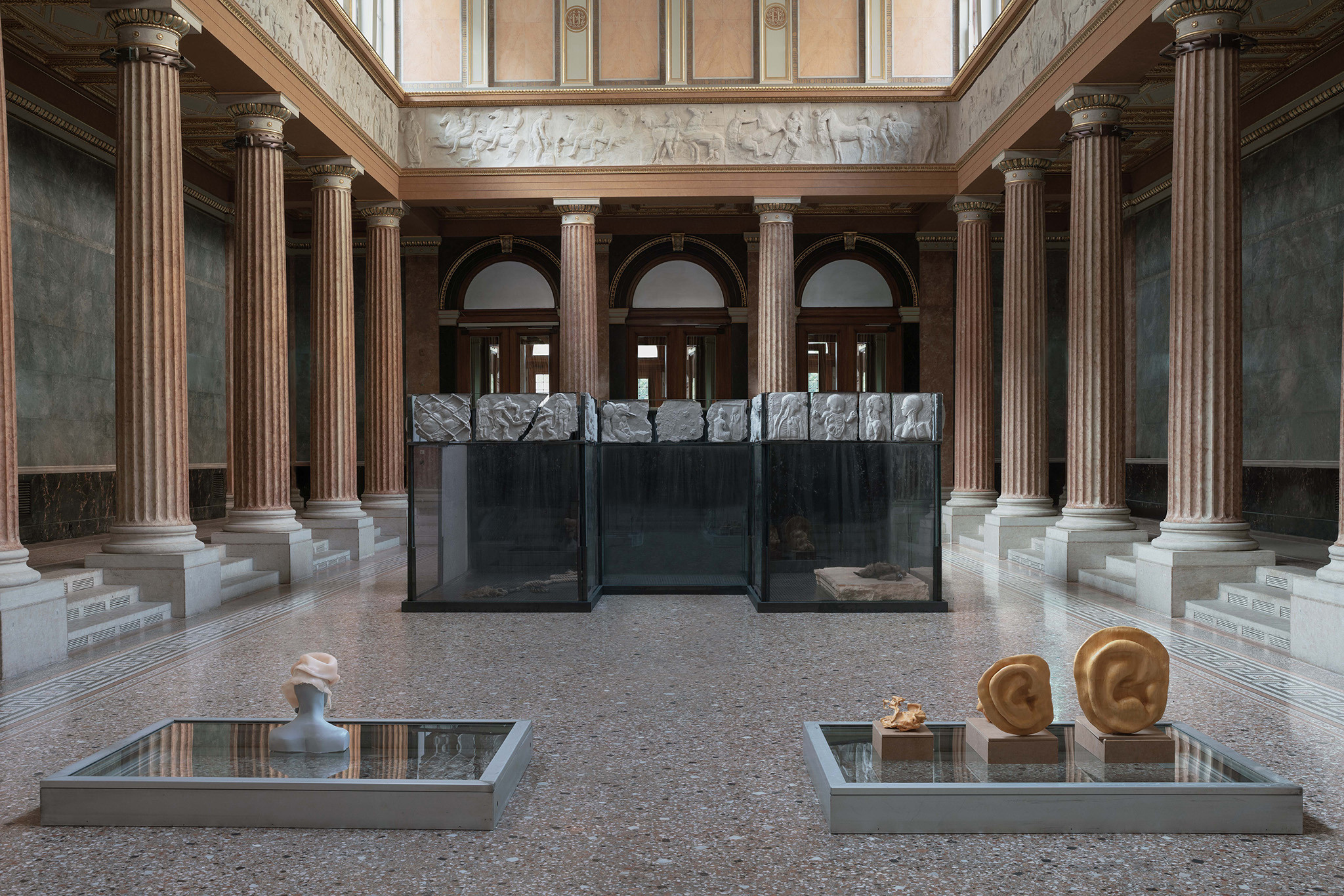
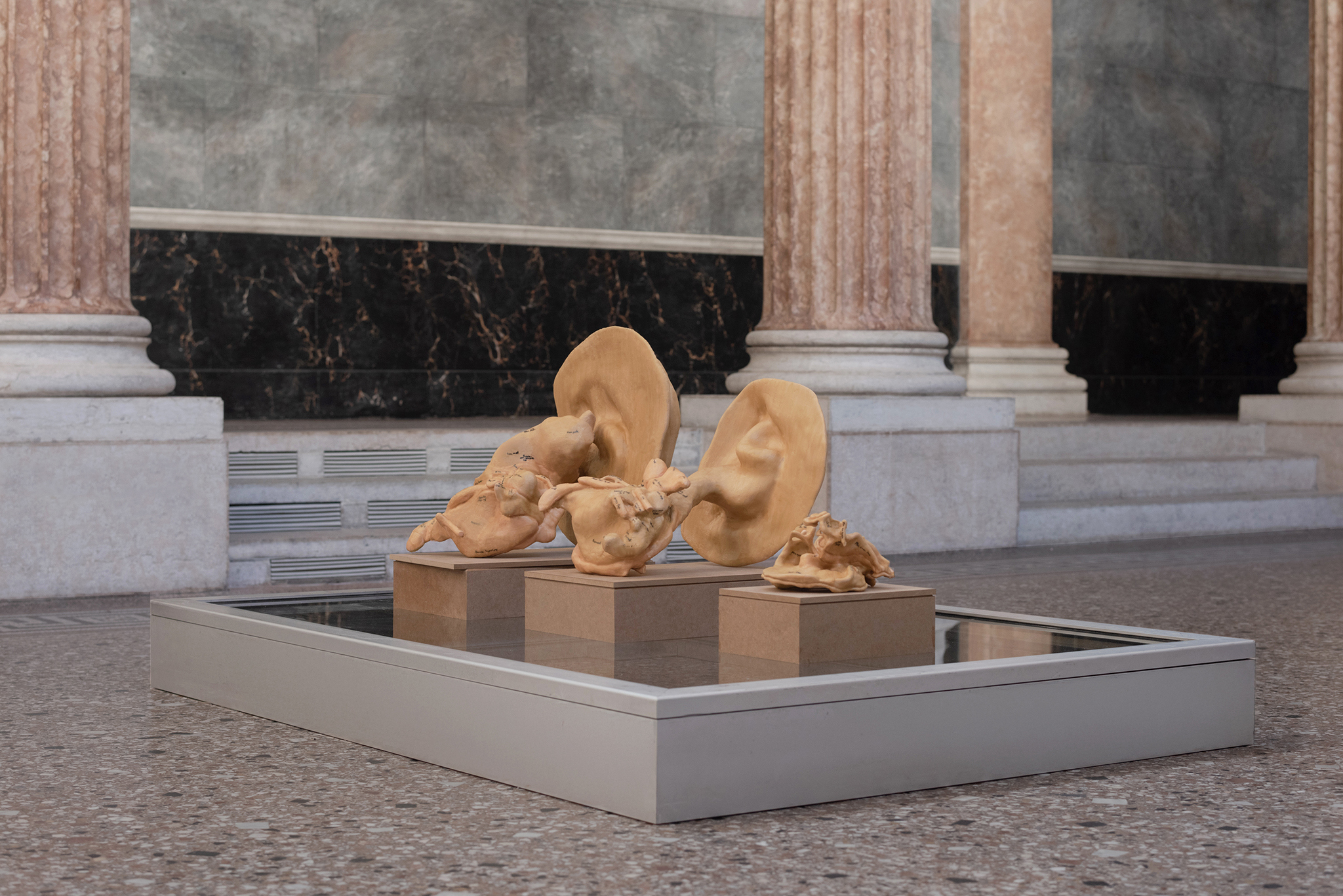
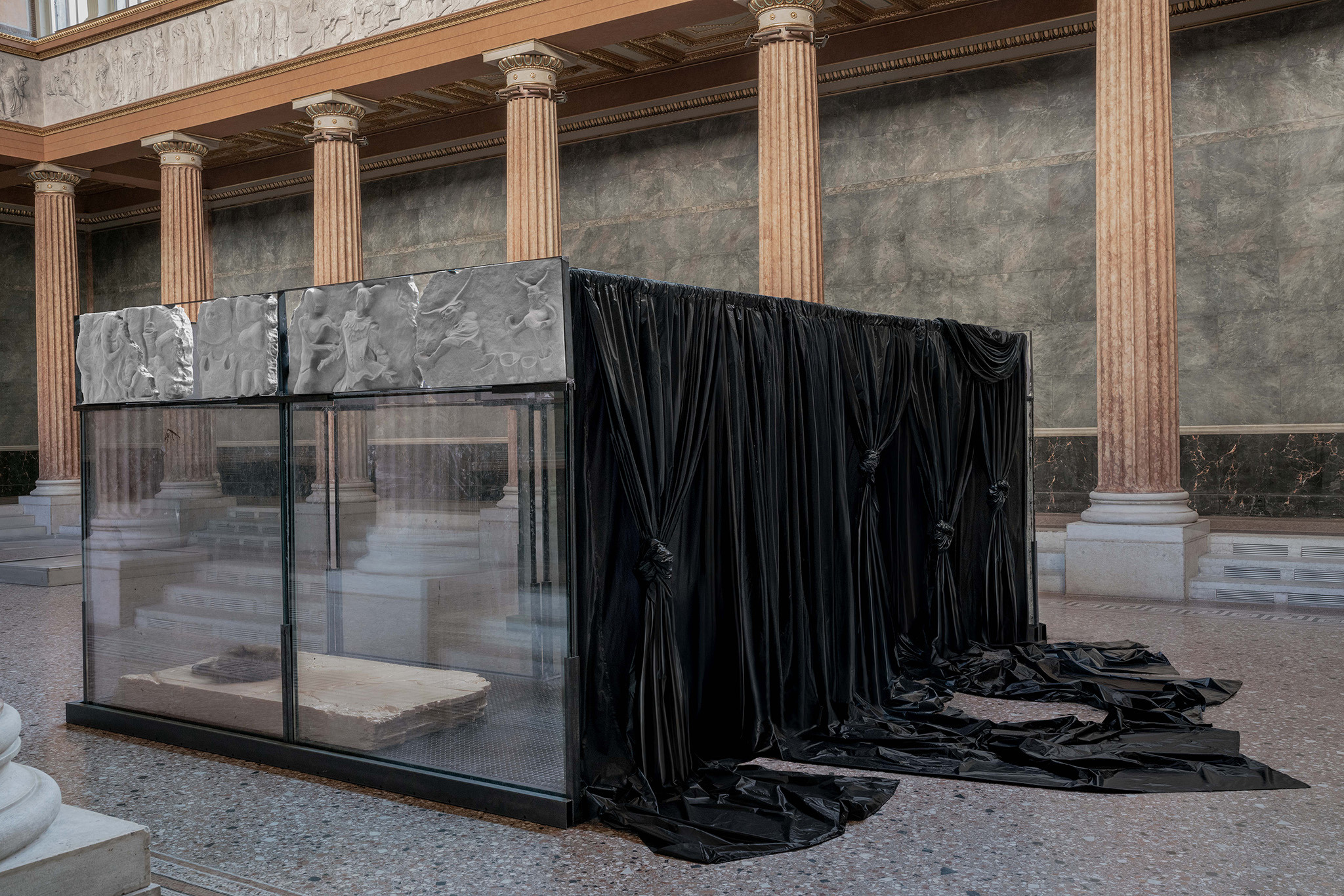
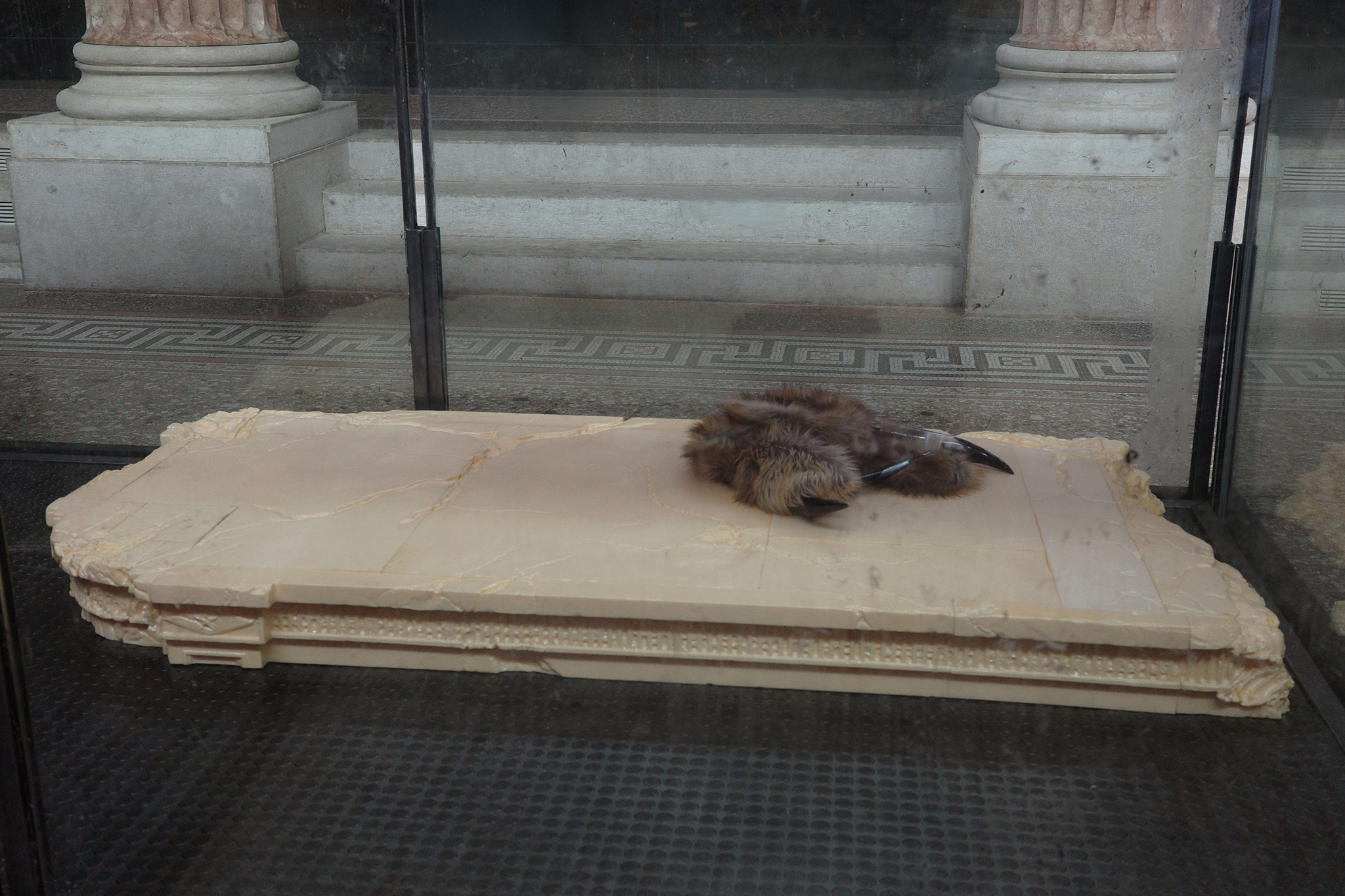
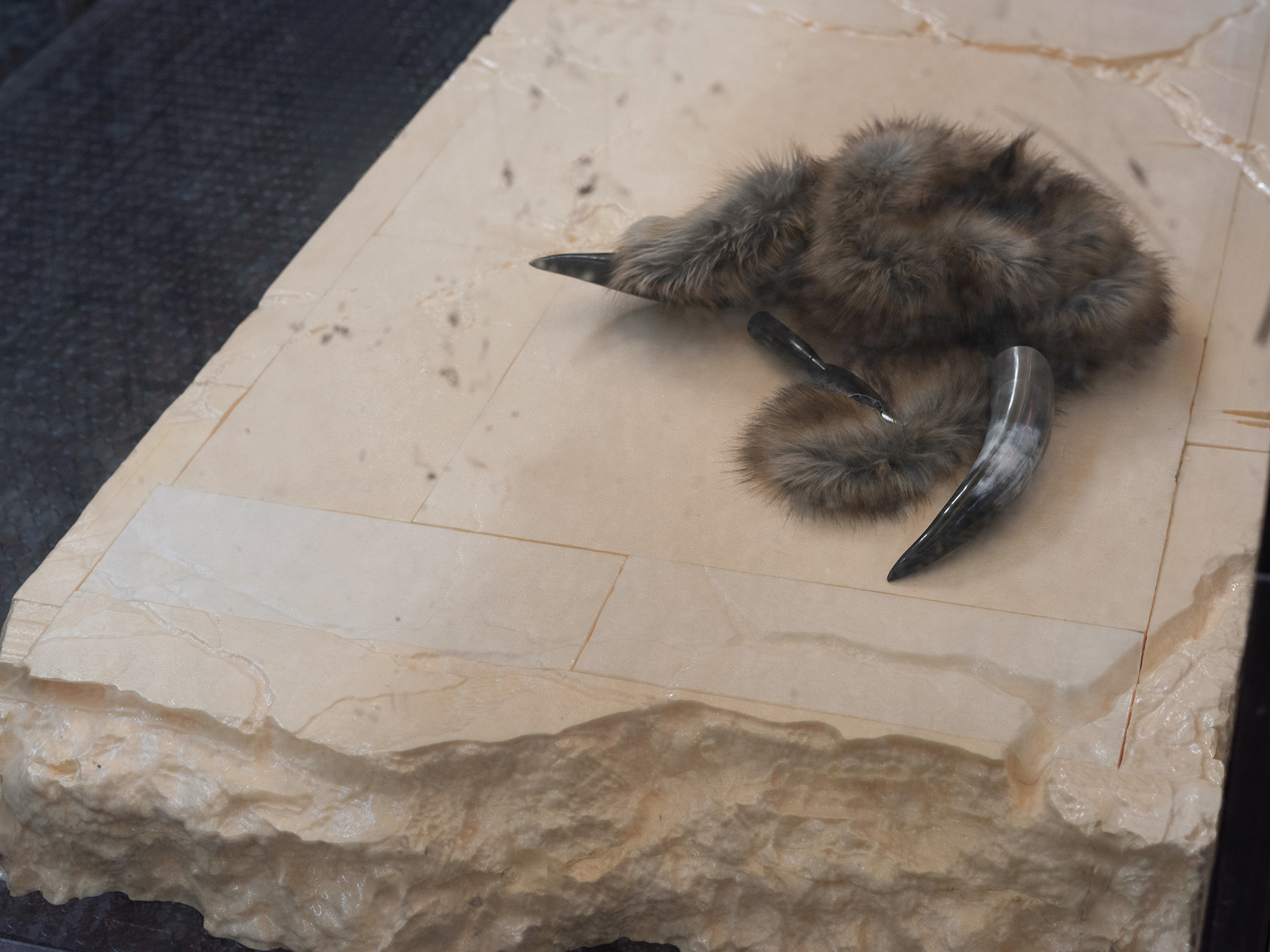
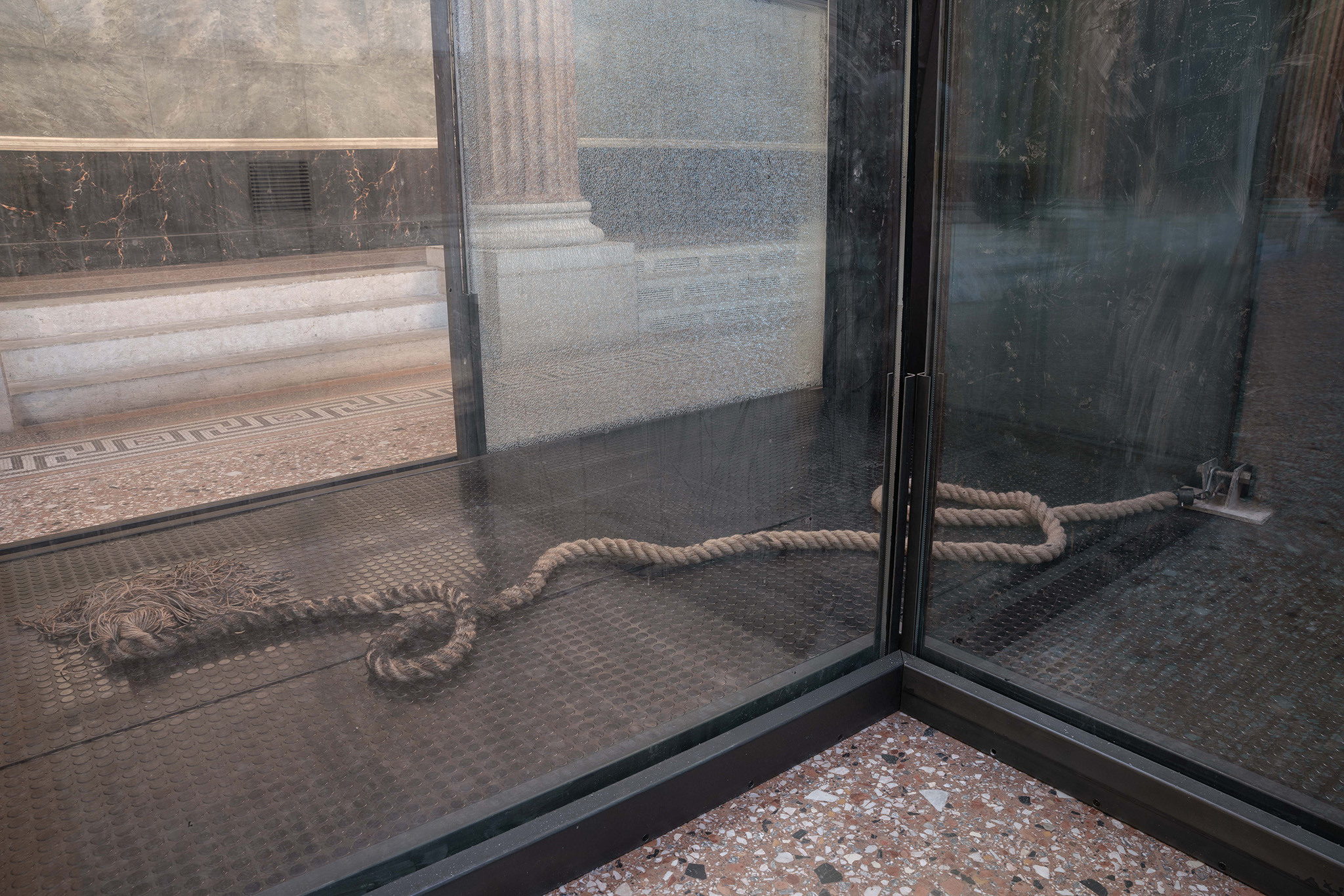
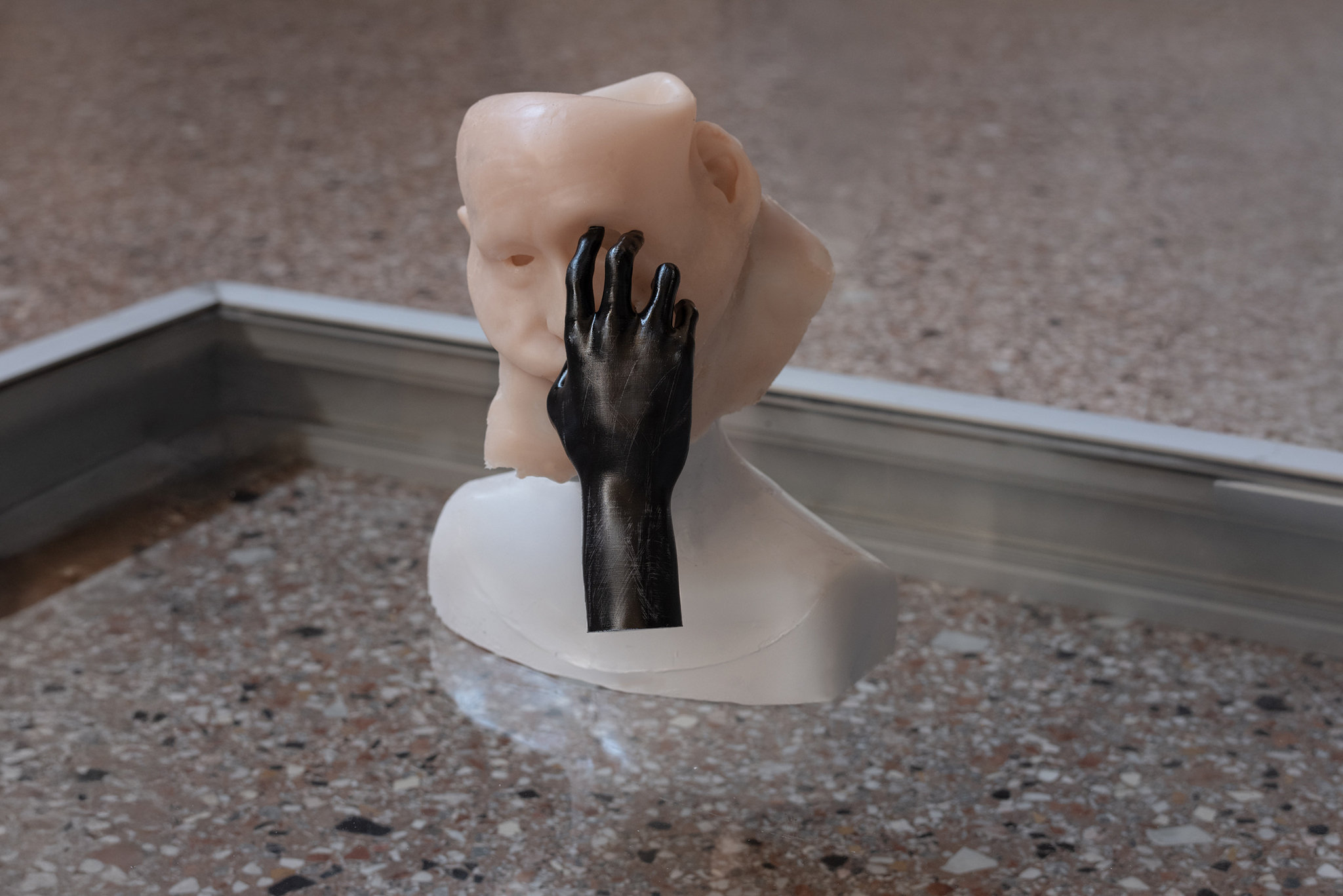

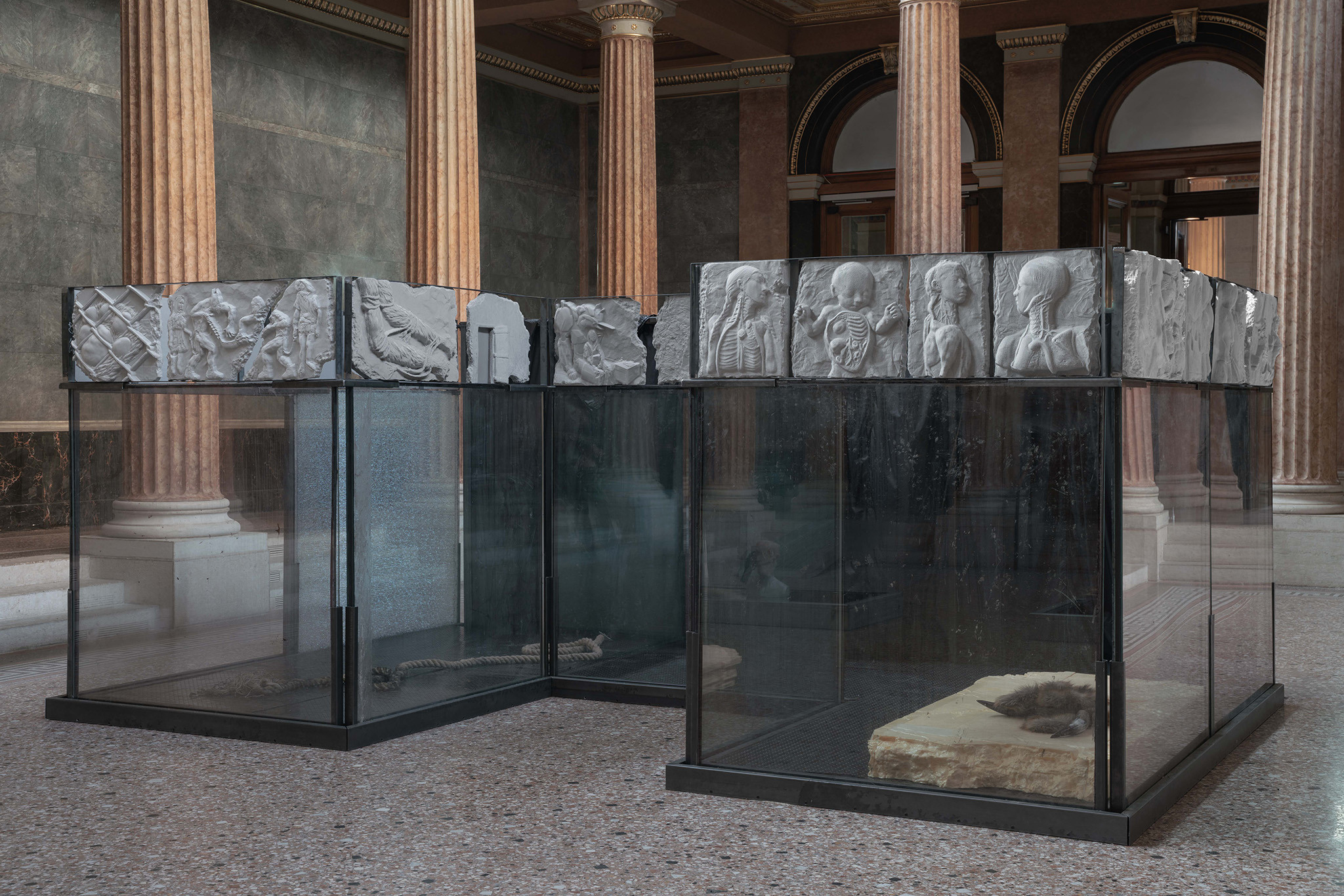
3 + 3 = 5 is a work by Oskar Pollack and Manuel Rugo that was staged as an exhibition in the Aula of the Academy of Fine Arts in Vienna. The project derives its formal line from art-historical mediums and forms of their display in museums, such as a 14-meter-long frieze mounted on glass windows or anatomical wax models. This is layered with with an interest in superficiality, as well as complexities and events that arose from our engagement with the relation between media and violence, which have been abstracted into the motives and objects on display.
A study into what it means for the creation of images, that today they are primarily used affectively and effectively and an adjoining exchange with scholars focusing on that topic served as a starting point for the development of this project.
Inside the glass container stands a mono coloured version of the Vice Presidents desk in the U.S. capitol. This desk became one of the final objects in the storming of the US capitol by far-right groups on January 6, 2021. On top of the table rests a coyote fur hat and the tip of a spear. These are the requisites that Jake Angeli, the QAnon Shaman, needed that day to performatively fulfill this role. While the coming together of people, like on that day, may seem like a spontaneous outburst that exceeds any given frame, they are in fact premediated to a large extend. A rope lying next to the desk reminds us of this breaking wild, although within a predefined framework.
Deep cracks run through the table. All objects in the exhibition are characterised by a particular emphasis on surface treatments. While treating objects so they simulate a history they do not, in fact, have, has bourgeois roots, stemming from the 19th century. It has today developed into the universal language of CGI and the entertainment industry. In digital environments, so-called decals are used to give a body to the infra-thin surfaces of meshes.
This construction of a story reminds us of how the media used in this installation, such as the frieze or the anatomical models, traditionally served to affirm an idealized, normalized form of knowledge. The context of the exhibition space, with its existing frieze, also calls the newly produced frieze into question with its motifs and the treatment of its surface. This reveals a parallel between the standardization of traditional media and the contemporary media landscape. The works on display deal with the question of what it means for the creation of images, given that today they are primarily used affectively and effectively. The result is a cosmogram that speaks of complex systems of extraction, that, like the many streams of this project, all converge at the level of the body.
